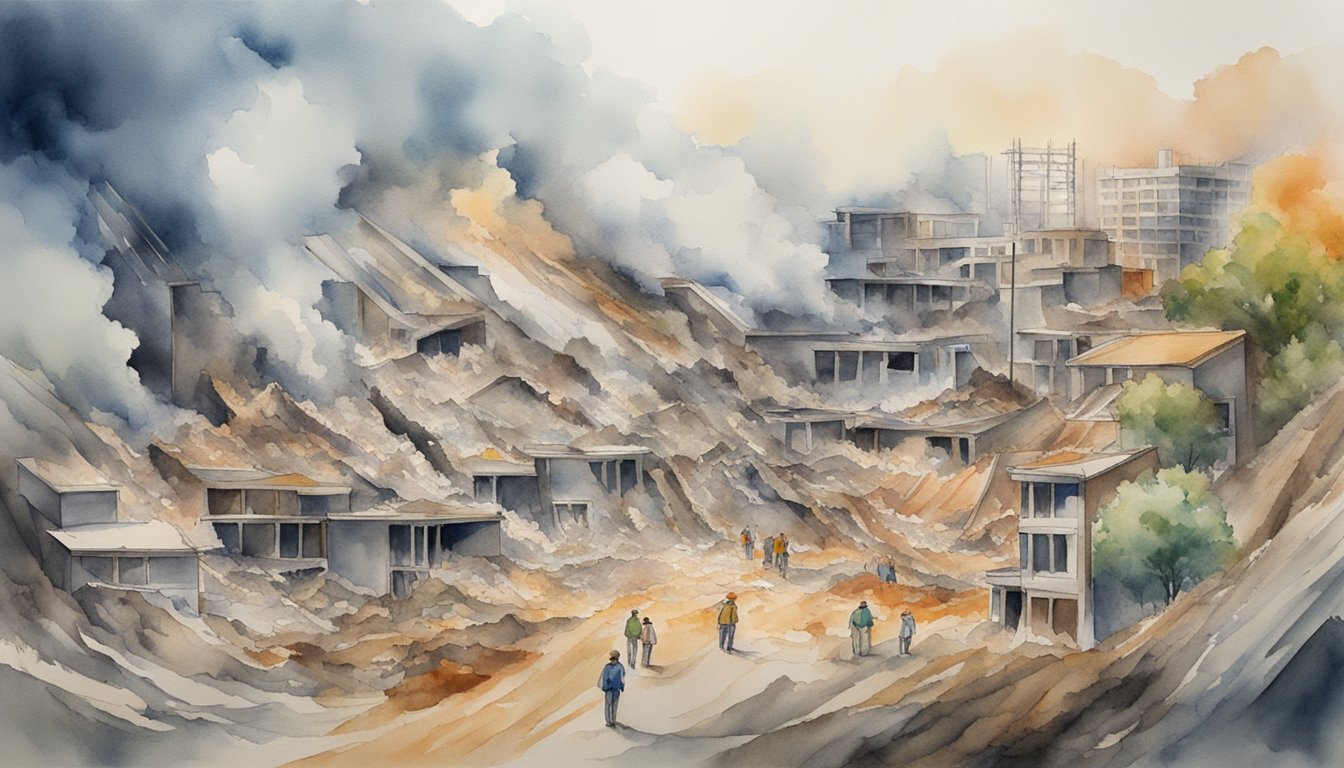Understanding Earthquake Fundamentals
To grasp the causes and mechanics of earthquakes, one must understand the role of tectonic plates and their boundaries, the nature of seismic waves, and the methods used to measure an earthquake’s magnitude.
Tectonic Plates and Boundaries
Earthquakes are primarily a consequence of the dynamic forces affecting the Earth’s tectonic plates, which make up the lithosphere’s outermost layer. The Earth’s crust and the upper part of the mantle, together known as the lithosphere, are divided into several large and small plates that are always in motion. However, they move over the asthenosphere, a semi-fluid layer allowing for movement, at a rate of a few centimeters per year. These tectonic plates meet at plate boundaries, which are categorized into three main types: divergent, convergent, and transform. Earthquakes commonly occur along these boundaries where the plates interact, producing different stresses in the Earth’s crust and sometimes leading to a sudden release of energy along faults within the plates.
The Science of Seismic Waves
An earthquake generates waves of energy, known as seismic waves, that travel through the Earth’s interior and across its surface. Seismologists study these waves to understand the Earth’s internal structure. There are several types of seismic waves, with the most well-known being P-waves (primary waves) and S-waves (secondary waves). P-waves are compressional waves that travel faster and arrive first, while S-waves are shear waves that arrive after the P-waves. These waves originate at the earthquake’s focus, also called the hypocenter, located beneath the Earth’s surface. The point on the Earth’s surface directly above the hypocenter is the epicenter.
Measuring Earthquake Magnitude
The strength of an earthquake is measured by its magnitude, which is determined from the amplitude of seismic waves recorded by a seismograph. There are different scales to measure magnitude, such as the Richter scale and the moment magnitude scale. The Richter scale, historically the first scale to quantify the size of earthquakes, is often replaced by the moment magnitude scale, which is capable of providing more accurate and reliable measurements for different sizes and depths of earthquakes around the world. When a seismograph captures the seismic waves, this data is recorded onto a seismogram. Scientists study these records to assess the earthquake’s magnitude and impact. The magnitude of an earthquake reflects the amount of energy released at the source and helps determine potential damage levels.
Impact and Mitigation of Earthquakes

Earthquakes present a spectrum of hazards and necessitate comprehensive strategies for risk reduction and response. The successful mitigation of earthquake-related impacts involves understanding induced hazards, improving predictive methods, and enhancing structural resilience.
Earthquake-Induced Hazards
Earthquakes can lead to additional natural disasters, such as tsunamis, which are generated when seismic activity displaces large volumes of water in the ocean. Landslides may also occur as a result of ground shaking, especially in areas with steep topography. Moreover, ignition of flammable materials due to damaged infrastructure can result in fires. These secondary events often amplify the destruction caused directly by the quake.
Predicting and Preparing for Earthquakes
Though predicting the precise time and intensity of an earthquake remains challenging, agencies like the United States Geological Survey work on estimating probabilities of seismic events. Preparedness includes effective planning and education on safety measures. Communities in high-risk zones benefit from earthquake drills and learning the importance of “Drop, Cover, and Hold On” during tremors.
Building Resilience to Earthquakes
To reduce property damage and protect lives, rigorous building codes are implemented, particularly in areas with high seismic activity such as California’s San Andreas Fault. These codes are designed to ensure that buildings and infrastructure can withstand earthquakes, incorporating practices like base isolation and energy dissipation. Investing in retrofitting older structures is also key to reducing vulnerabilities.

